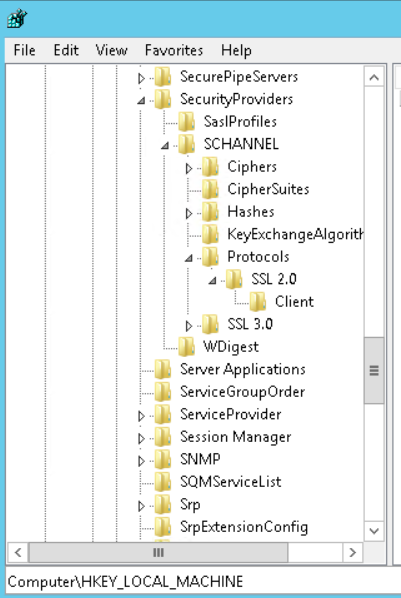


Microsoft itself will help make the change

The biggest difference is the support of SNI and the fact, that there is no more need to assign IP addresses to individual SSL certificates. However, server administrators should definitely upgrade to the Windows server 12 or 2016, as this will significantly simplify the administration of SSL certificates in IIS. Its users can look forward to the currently most modern protocol TLS instead of the old TLS 1.2. Nevertheless, WS 2008 is expecting an update, which will allow the usage of TLS 1.2. The expanded support implies, that Microsoft provides patches for security gaps and vulnerabilities until 2020, but the product is not being developed any further. Currently, the older WS 2008 is only supported within an added feature, which will end in 2020 – but is still being used nonetheless. We know what the primary problem is – the lack of TLS 1.2. Windows Server 2008 will be upgraded to TLS 1.2. If your browser - respectively your operating system – is unable to communicate with TLS 1.2., you should consider upgrading to a newer version. The test is also able to point out possible vulnerabilities of your browser. Similar to the SSL/TLS server test, you will see the versions of the protocols, which the browser is compatible with. not from an administrator´s but a user´s point of view, you can check your browser´s abilities with the SSL/TLS Capabilities of Your Browser test by SSLlabs. support is already activated in the default settings. On WS 2012 and later systems, the TLS 1.2. needs to be added to the Windows Server 2008. The table above clearly shows, that TLS 1.2. Support of SSL and TLS on Windows and Windows Servers. at all, this feature was only introduced for Windows 7 and WS 2008 R2 – however, it is not active in the latter. Vista and WS 2008 do not support TLS 1.2. Affected are in detail the systems Windows Vista, Windows 7 and Windows Server 2008. However, the problem behind this is the lack of TLS 1.2. for instance, is being threatened by POODLE (the original version was only jeopardising SSLv3, but the later issue is also a risk for the TLS protocols).

The age-old SSLv3 could finally be successfully eradicated after various security incidents, but the majority of the (not only corporate-) systems supports and uses old and vulnerable protocols to this day. is only now approaching its distribution on the software devices. was developed in 2008 its replacement TLS 1.3. Customers will not only be prompted, but forced to do so – by limiting the support in the current products. The corporation declares, that their customers ought to switch from TLS 1.0.


 0 kommentar(er)
0 kommentar(er)
